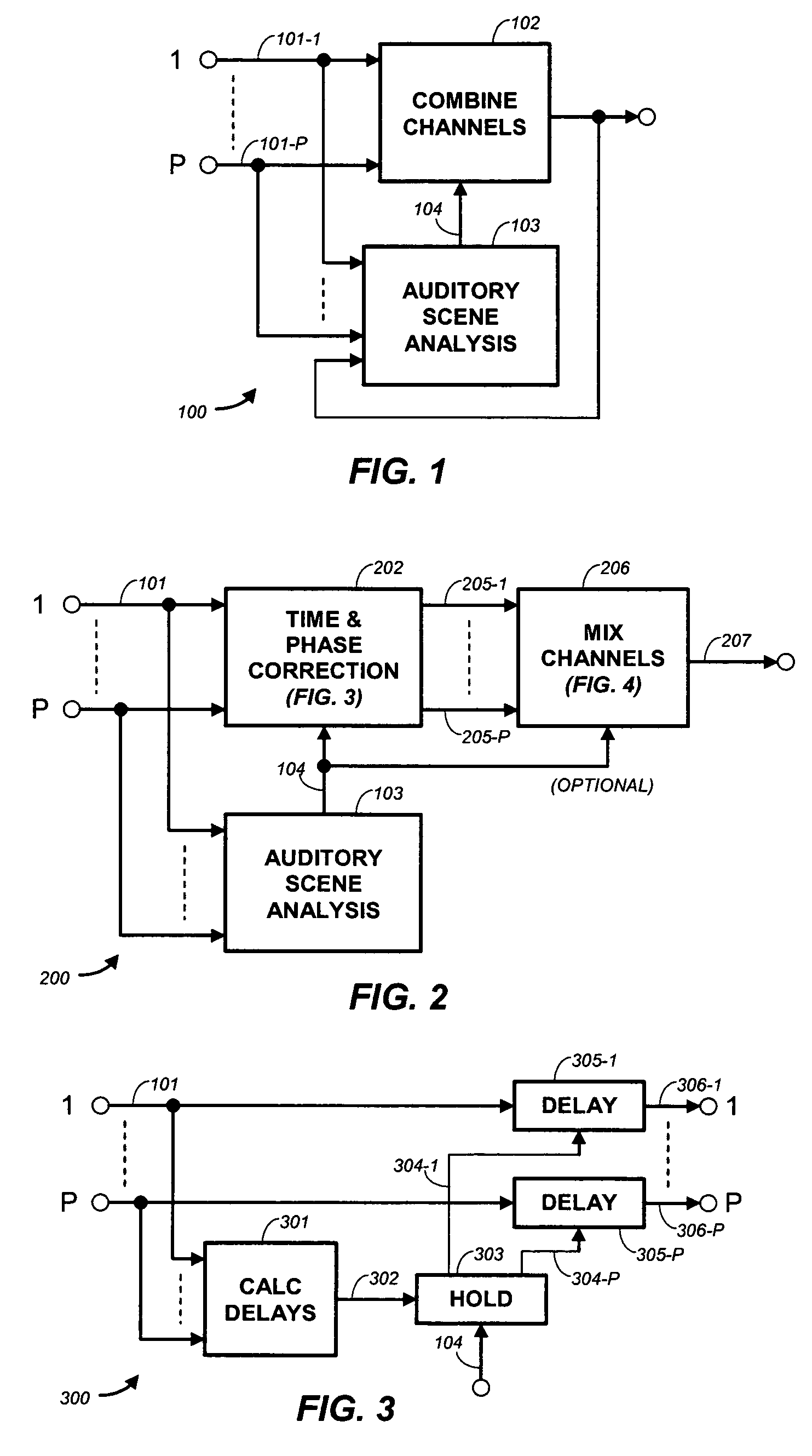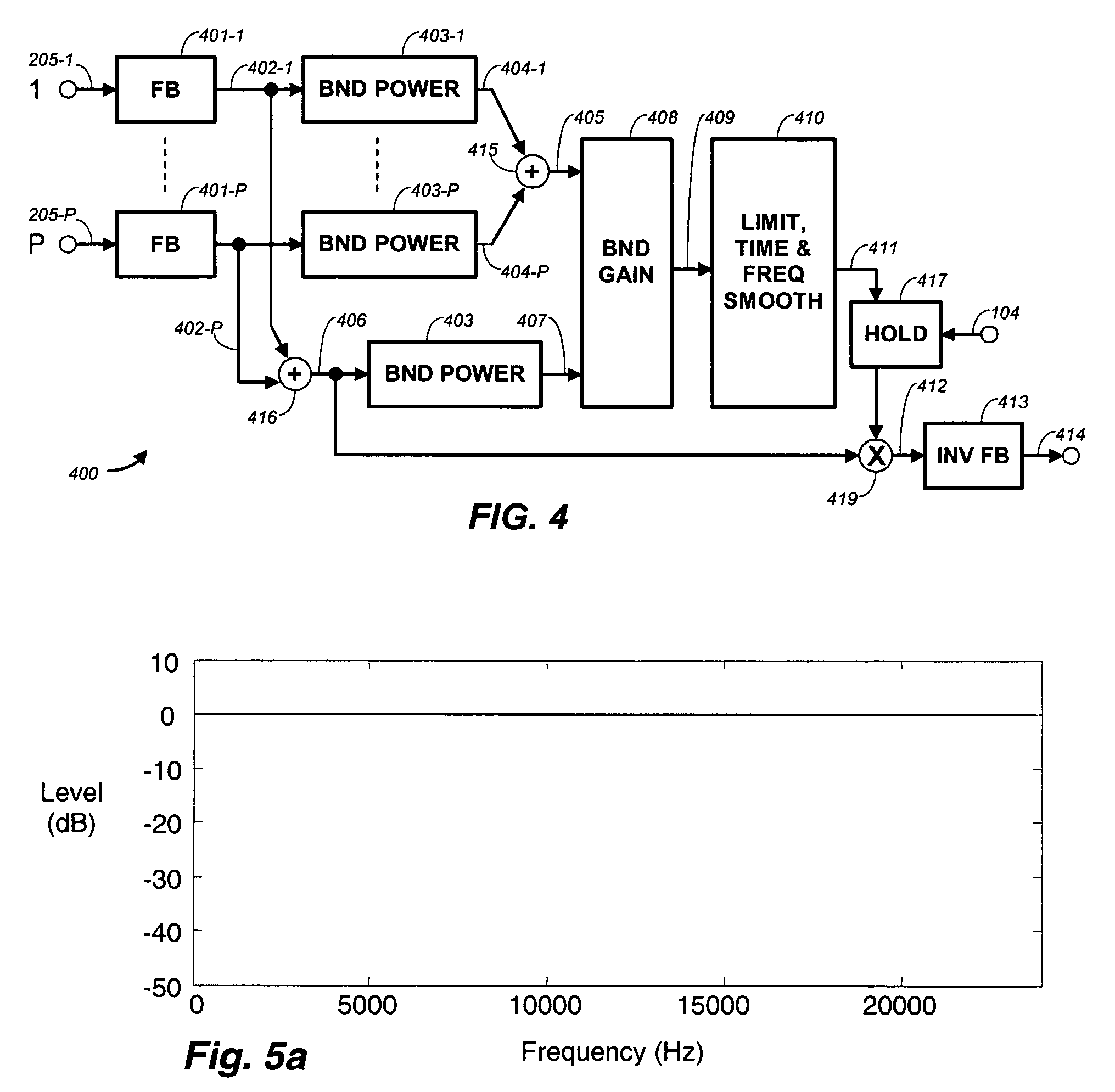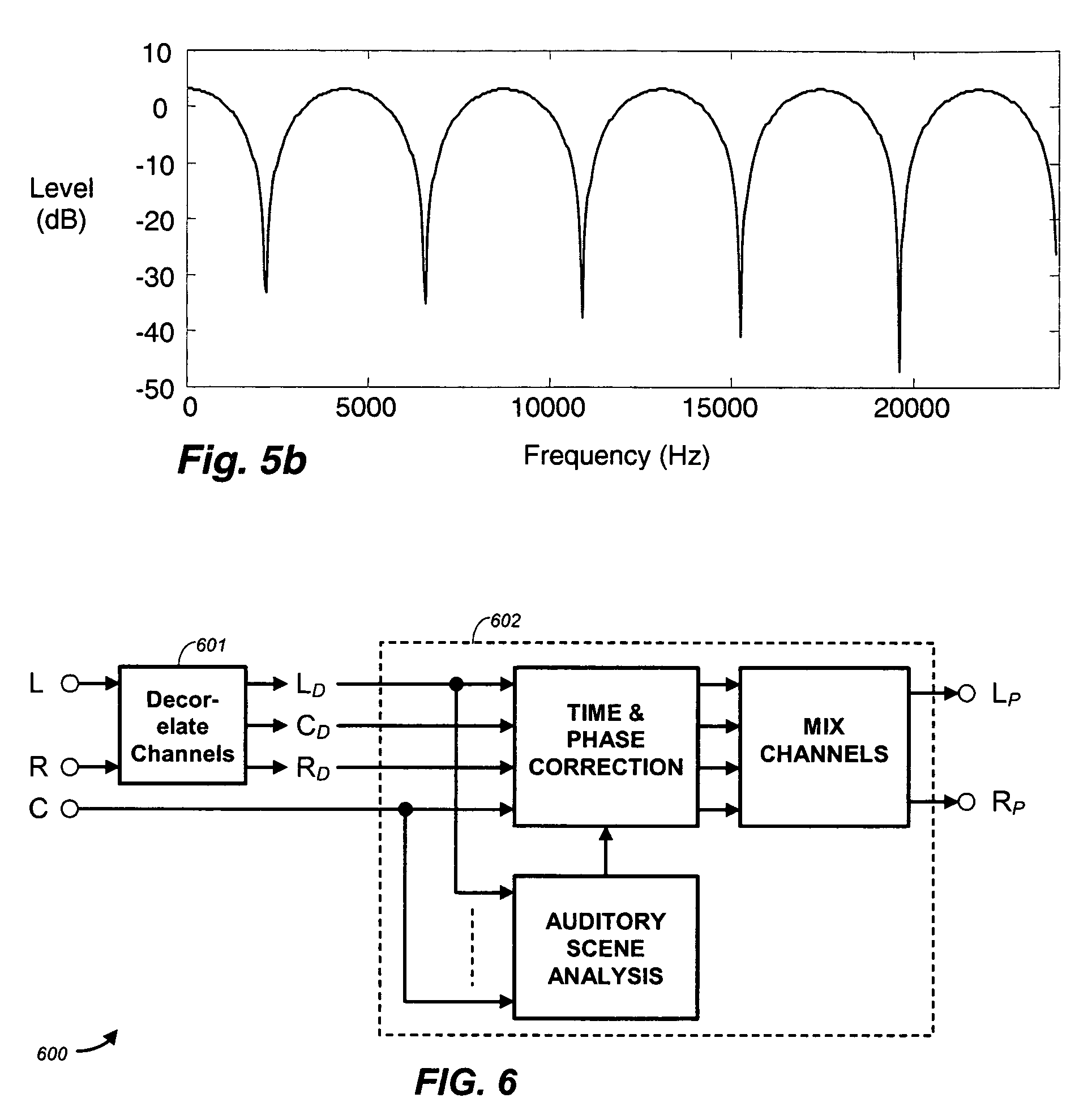Method for combining audio signals using auditory scene analysis
a technology of auditory scene and combined audio signals, applied in the direction of stereophonic arrangments, transducer details, transducer acoustic reaction prevention, etc., can solve the problems of audible artifacts, audible artifacts, and combining channels may produce audible artifacts, so as to improve the sound quality of combined audio signals
- Summary
- Abstract
- Description
- Claims
- Application Information
AI Technical Summary
Benefits of technology
Problems solved by technology
Method used
Image
Examples
Embodiment Construction
[0031]A generalized embodiment of the present invention is shown in FIG. 1, wherein an audio channel combiner or combining process 100 is shown. A plurality of audio input channels, P input channels, 101-1 through 101-P are applied to a channel combiner or combining function (“Combine Channels”) 102 and to an auditory scene analyzer or analysis function (“Auditory Scene Analysis”) 103. There may be two or more input channels to be combined. Channels 1 through P may constitute some or all of a set of input channels. Combine Channels 102 combines the channels applied to it. Although such combination may be, for example, a linear, additive combining, the combination technique is not critical to the present invention. In addition to combining the channels applied to it, Combine Channels 102 also dynamically applies one or more of time, phase, and amplitude or power adjustments to the channels to be combined, to the resulting combined channel, or to both the channels to be combined and t...
PUM
 Login to View More
Login to View More Abstract
Description
Claims
Application Information
 Login to View More
Login to View More - R&D
- Intellectual Property
- Life Sciences
- Materials
- Tech Scout
- Unparalleled Data Quality
- Higher Quality Content
- 60% Fewer Hallucinations
Browse by: Latest US Patents, China's latest patents, Technical Efficacy Thesaurus, Application Domain, Technology Topic, Popular Technical Reports.
© 2025 PatSnap. All rights reserved.Legal|Privacy policy|Modern Slavery Act Transparency Statement|Sitemap|About US| Contact US: help@patsnap.com



